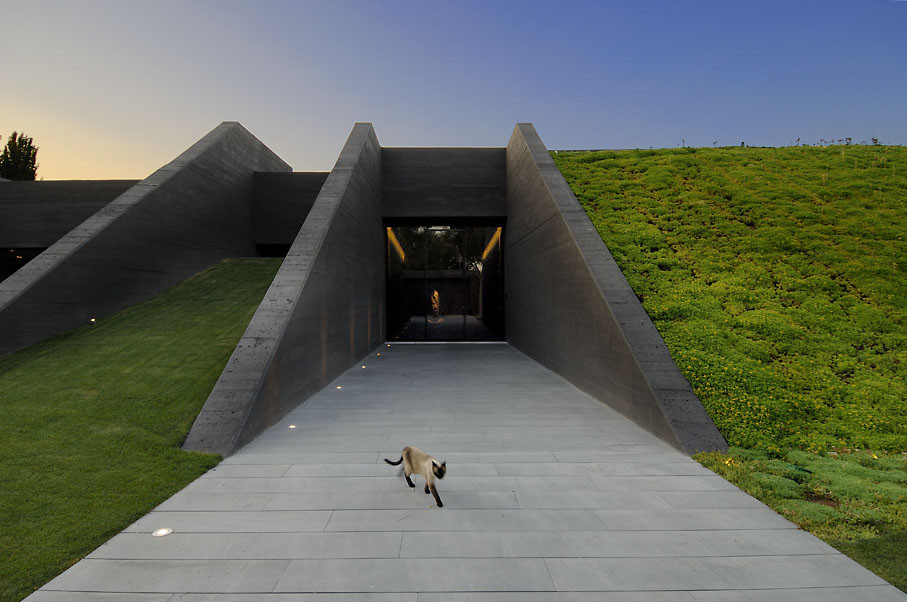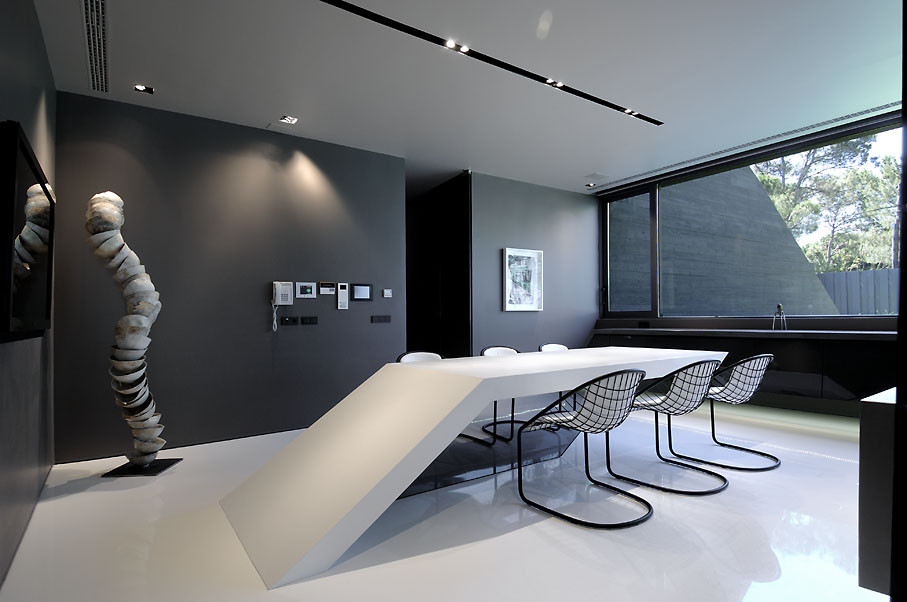Modern Semi-Underground Homes That Become One With The Land
Living underground is pretty cool and we’re not talking metaphorically. It’s really cozy, fun, not to mention interesting, plus the earth acts as an insulator. Don’t just think of those little hobbit houses. They’re definitely cute but they’re small and rustic. If you want something better suited for a present day lifestyle, check out these modern underground homes and the ways in which they stand out by being hidden.




This pavilion comes as an addition to an existing home located in northern Italy. It was a project by act_romegialli and it’s a structure that serves as a lounge and fitness area. The placement and design of the pavilion were more or less dictated by the topography of the site. There was also a desire to naturally integrate the pavilion into the landscape and to connect it to the surroundings, hence the glazed facade which reveals views of an artificial lake.




Sometimes the topography inspires the design of a house and other times it’s the house that shapes the site, like in the case of this project completed by Bauen in Paraguay. We’re talking about two single-family homes that were built on a flat piece of land. The architects and their clients came up with the idea to shape the land and to create artificial hills to incorporate the houses in. As a result, these homes are underground even though they actually sit above the ground.





Partially hidden behind concrete walls and partially covered by greenery, this house in Madrid built by A-cero has a design full of contrasts. On one hand the back of the house is completely open to the outdoors, more exactly to the garden and the lounge areas. On the other hand, the land seems to be enveloping the house, offering this organic and fresh look to the entire property.




The way in which the architects at VASHO dealt with the limited amount of space in this case is quite interesting. They had to find a way to design a house for 18 people within a 500 square meter area. The site presented its own set of challenges, featuring this steep slope which ultimately inspired the architects to design a modern underground home. The interior spaces become a part of the slope as the house gradually becomes one with the land.



While underground homes are definitely interesting, one question comes to everyone’s mind: wouldn’t such a space be deprived of light and closed off from the beautiful views around it? The answer is “not necessarily”. It’s possible to build a house into a slope and to have it open to the surroundings. This modern underground home in Vals, Switzerland is the perfect example. It was designed by SeARCH and CMA and it’s embedded into a steep slope, with a facade that captures the light and with a steep viewing angle.



This house in Leiria, Portugal is so simple it doesn’t even look like an actual home. But what you see is actually just a part of the house. There’s more of it underground and if you don’t look closely you might just miss it. The living area placed at street level are organized around a void and receive light from above. The private spaces are underground. The distribution of the spaces is an interesting and very well-defined one. This was a project by architect Aires Mateus.



Although they’re definitely interesting to look at, underground homes are inspiring through much more than just their looks. A perfect example in that sense is the house designed by Bercy Chen Studio in Austin, Texas. This is a project designed to have a positive impact on the land. Not only that the architects tried to minimize the disturbance to the site but they also wanted to heal the site by restoring the previously damaged slope and reintroducing more than 40 species of wildflowers and grass. They built here two green-roofed structures with their backs embedded into the slope.





How can you design a house on a plot populated with lots of protected oak trees? Well, you’d have to build around them and if you want to take advantage of the views you have to be creative. Design studio Walker Workshop can offer some tips in this sense. They designed a house in Beverly Hills, California which sits on a site with panoramic views of a canyon. They wanted the house to take advantage of the views without becoming a focal point of attention so they hurried it into the hill and have it a green roof.






L’escaut architects made their client’s wish of working in the garden come true by designing this workshop which is two thirds underground. It looks as if it are there. The design is a hybrid between a hobbit house and an independent structure. The workshop is covered in greenery and looks as if the land slowly covered it, as if it’s been there all along and the earth deposited on its roof like dust.



When the land is so beautiful, it would be a shame to just stick a house there and ruin the view. A much better option is to design a house that blends in, that connects with the land like this summer home by Bassicarella Architectes does. Its located in Switzerland in an area with lots of hills and it sits on a slope. It’s been designed to physically connect with the land and it’s actually a modern version of an underground home without featuring the usual minimalist, clean lines and artificial finishes.



There’s another gorgeous underground home in Pembrokeshire, Wales which we’d like to have a look at. It was designed by Future Systems and built in 1998 and it’s locally known as the Teletubby House. Basically the entire structure is swallowed by the land, being embedded into the ground with only one facade exposed to the exterior. A series of glass walls, doors and windows welcome the light in while also making the most of the view.





Private houses aren’t the only ones that get to communicate with the land in such an intimate and close way. The Biesbosch Museum which is located in Werkendam, The Netherlands offers a unique interpretation of this concept. After being redesigned by Studio Marco Vermeulen, the museum now welcomes its guests to walk up a path that leads them to the roof. It’s as if the green roof slopes down and becomes one with the land.
